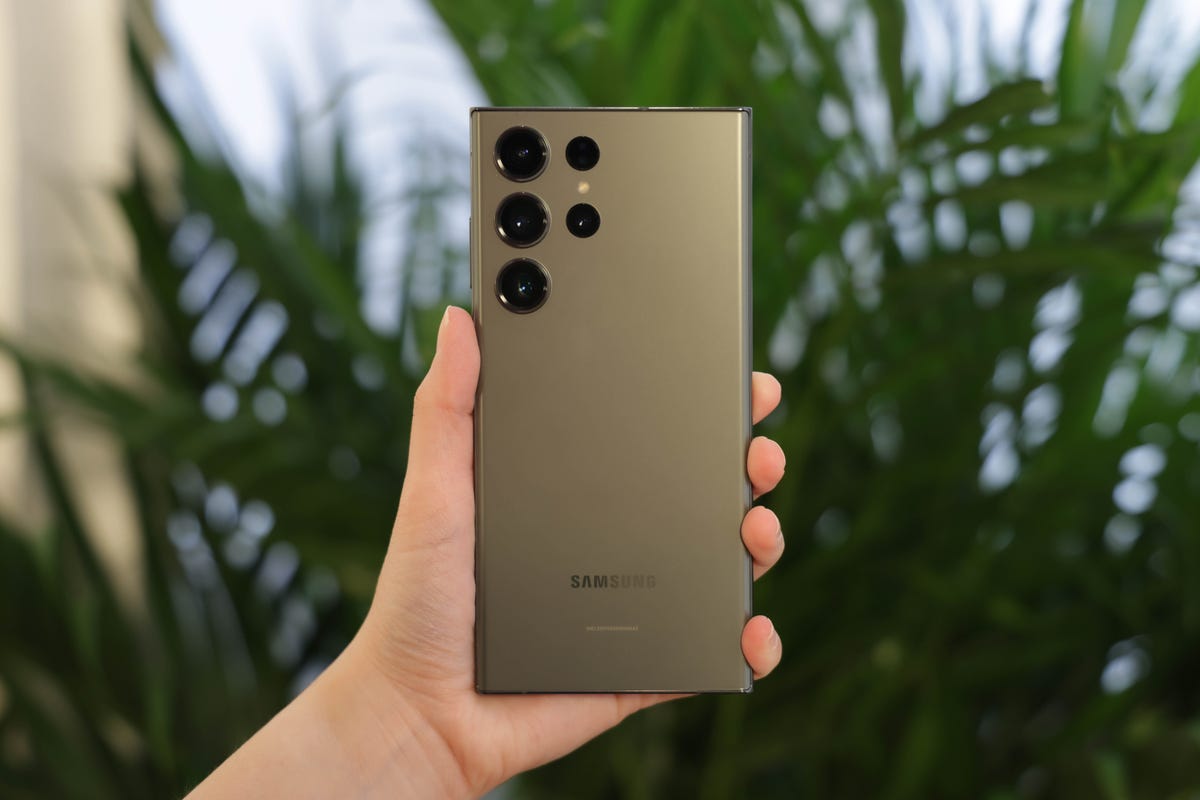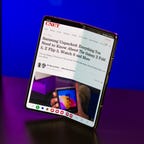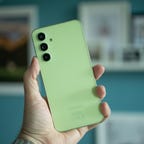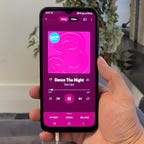The Galaxy S24 series has arrived. We are working our way through testing and reviewing all three new models (the Galaxy S24, S24 Plus and S24 Ultra) and will update this list as soon as we’re through. But even with the new phones out, Samsung still sells its S23 series at a discount which makes some of them a great deal.
Looking for a versatile camera setup and a big screen? A great choice may be the $1,200 Galaxy S23 Ultra. A more budget-friendly option is the Galaxy A14, which carries a price tag of roughly $200. Foldable models come in various selections: the Z Fold 5 and Galaxy Z Flip 5 are the newest Samsung devices in this category. As more Samsung phones are tested, we’ll be sure to update this list.
Samsung Galaxy phones compared
undefined
| Model | US starting price (at launch) | Screen size |
|---|---|---|
| Galaxy A14 5G | $200 | 6.6 inches |
| Galaxy A54 5G | $450 | 6.4 inches |
| Galaxy S23 FE | $600 | 6.4 inches |
| Galaxy S23 | $800 | 6.1 inches |
| Galaxy S23 Plus | $1,000 | 6.6 inches |
| Galaxy Z Flip 5 | $1,000 | 3.4 inches (cover); 6.7 inches (main) |
| Galaxy S23 Ultra | $1,200 | 6.8 inches |
| Galaxy Z Fold 5 | $1,800 | 6.2 inches (cover); 7.6 inches (main) |
What is the best Samsung phone?
The Samsung Galaxy S23 Ultra — priced at $1,200 — comes packed with maximum features which, for most people, is more than necessary. For us, the $800 Galaxy S23 is a standout among its Galaxy counterparts. It has the same Snapdragon customized chip as the S23 Ultra, runs the same version of Android and costs $400 less. The Galaxy S23 has a very capable triple rear camera setup that is versatile in capturing both bright outdoor scenes and candid moments inside under mixed lighting. Overall, the Galaxy S23 is ideal for Android fans who prioritize fast performance, solid cameras and a spacious, bright screen in a compact package.
How to pick the right Samsung phone for you
Deciding which Samsung phone is right for you comes down to what you want in a phone and how much you’re willing to spend. If you want the largest screen available on a standard Samsung phone, enjoy note-taking with a stylus and need a camera with a significantly closer zoom, the Galaxy S23 Ultra is the right choice. But you’ll also have to spend more than $1,000 unless you score a trade-in deal.
Those who don’t need the stylus, prefer more compact devices and still want a top-notch camera should consider the Galaxy S23 or Galaxy S23 Plus. And if you just want the basics, like a spacious screen, 5G and a decent camera, consider the Galaxy A54 5G. Those looking for the flashiest tech around — and who also have deep pockets — should consider the Galaxy Z Fold 5 or Galaxy Z Flip 5.
It’s also important to consider whether now is the right time to upgrade. If you have a relatively new phone that’s two to three years old and still functions properly, you can probably wait. Samsung has also committed to supporting four generations of Android operating system updates for devices like the Galaxy S23 and Galaxy A54 5G, which improves their longevity.
Finding the best Samsung phone will ultimately come down to preference. Choosing among so many options can get complicated, so here’s how to decide which Samsung phone is best for you. Check out our phone buying guide for more tips on how to choose the right device. Not sure whether it’s worth upgrading to the Galaxy S23? We have a guide for that too.
Best Samsung phones in 2024
The Galaxy S23 Ultra is a lot but in a good way. It’s more than most people need in a phone, but that doesn’t make it any less impressive. Samsung made improvements to the camera’s resolution (200 megapixels compared with 108 megapixels), color tones and dynamic range, while retaining the same edgy design and massive 6.8-inch screen as its predecessor. There’s also a new Qualcomm Snapdragon 8 Gen 2 processor that’s been optimized specifically for Samsung’s phones, which brings faster performance compared with the Galaxy S22 Ultra.
Starting at $1,200, it may be an understatement to call this phone expensive. But those willing to pay more for a giant screen and a high-quality, versatile camera won’t be disappointed. Read our Galaxy S23 Ultra review.
The Galaxy S23 Plus is the Goldilocks of smartphones. It’s not too big, but it’s not too small, either. The S23 Plus’ 6.6-inch screen is large enough to satisfy those who prefer larger phones, but it doesn’t feel as gargantuan as the 6.8-inch Galaxy S23 Ultra. Compared with the Galaxy S22 Plus, the S23 Plus has a new processor, a bigger battery and more storage in the base model, although the camera is more or less the same. If you want a phone with a big screen that doesn’t feel gigantic, a high-quality camera and an attractive design, the Galaxy S23 Plus is the way to go. Read our Galaxy S23 Plus review.
Android fans looking for a petite phone don’t have much to choose from, but the 6.1-inch Galaxy S23 provides a compelling option for those who want a phone that feels compact while still providing enough screen space. The Galaxy S23 comes with routine upgrades, like a fresh processor (a version of Qualcomm’s Snapdragon 8 Gen 2 that’s been optimized for Samsung’s phones), a slightly new design and a higher-resolution selfie camera. It’s the Galaxy S23’s larger battery, however, that makes it worth recommending. Read our Galaxy S23 review.
The Galaxy Z Flip 5 is the biggest leap forward Samsug’s flip phone has seen in years. Samsung has significantly expanded the size of the cover screen located on the outside of the device, meaning you can look up directions, take photos and send messages without opening the phone. It’s this combined with the Z Flip’s solid battery life and sturdy design that makes it a top pick.
The Z Flip 5 may be our favorite flip phone, but there are still some drawbacks. At $1,000, it’s expensive for a phone without a telephoto camera. And not all apps work natively on the front screen as they do on the Motorola Razr Plus. Read our Galaxy Z Flip 5 review.
The Galaxy Z Fold 5 is an incremental improvement that further refines Samsung’s large-screened foldable. If you’re looking for a phone that can double as a tablet for viewing work-related documents, running multiple apps on screen at once or watching movies, the Z Fold 5 is our top choice. The Pixel Fold may have better cameras, but the Z Fold 5’s bright screen makes Samsung’s phone better at its intended purpose: providing a big display that fits in your pocket.
The Galaxy Z Fold 5’s $1,800 price is still hard to swallow and puts it out of range for most people. But if you can afford it, the Z Fold 5 is the best iteration of Samsung’s phone-tablet hybrid yet. Read our Galaxy Z Fold 5 review.
Although it’s one of the cheapest phones you can buy from Samsung, the Galaxy A54 still packs great features, like 5G connectivity, a decent multiple rear camera setup, solid battery life and power enough for your everyday essentials. It looks pretty, too, and it’s one of the few remaining phones that let you expand the built-in storage using microSD cards.
It’s a great all-round budget phone, although generally, we found that the Pixel 6A offers better camera and processor performance, and it costs less than the Samsung. Read our Galaxy A54 5G review.
The $200 Samsung Galaxy A14 5G is one of the most functional phones under $200 available right now. Even though it’s at a budget-friendly price, this Samsung phone includes 5G support for faster data and NFC for contactless payments using Google Wallet. While both of those inclusions are highlights for this price range, Samsung is also planning to support the Galaxy A14 with two years of software updates and five years of security updates, making it a phone that will be safe to use for several years.
You should still keep in mind that the phone does have trade-offs to hit its $200 price. It has a drab design, a slower processor and mixed photography performance.
Yet despite its issues, the features it does include make it an easy recommendation if you are buying the phone outright or if it’s offered for free with a carrier subsidy deal. Read our Galaxy A14 5G review.

We test the battery, screen, performance, cameras and more on every phone we review.
We test every phone in real-world scenarios focusing on its features, design, performance, cameras, battery life and overall value. We document our findings in an initial review that is periodically updated when there are new software updates or to compare against new phones from competitors like Apple, Samsung, Google and OnePlus.
Photography
Photography is a major focus for most phones these days, so we take pictures and videos of various subjects in a variety of settings and lighting levels. We try out any new camera modes such as Action mode that debuted with the iPhone 14 line or the Unblur photo tool that launched with the Google Pixel 7 series.
Battery life
Battery testing is conducted in a variety of ways. We assess how long a phone lasts during a typical day of use, and note how it performs during more focused sessions of video calls, media streaming and gaming. We also conduct a video playback test, which isn’t always included in the initial review and is added later in an update.
Performance
We use benchmarking apps to measure the performance, alongside our own anecdotal experiences using the phone for our review. Of particular note are how graphics and animations look. Are they smooth? Or do they lag or stutter? We also look at how quickly the phone switches between horizontal and vertical orientations and how fast the camera app opens and is ready to take a photo.
We perform processor-heavy tasks like editing photos, exporting videos and playing games. We evaluate whether a newer version of a particular phone includes enough features to make it worth upgrading from older models.
Read more: How We Test Phones
Why buy a Samsung phone instead of other Android phones?
Which Samsung phone series is best, Galaxy A or Galaxy S?























+ There are no comments
Add yours